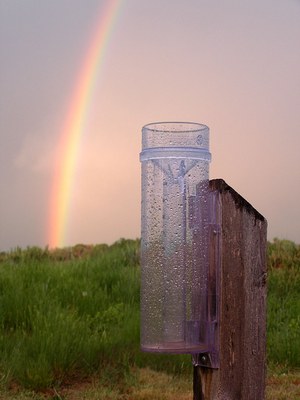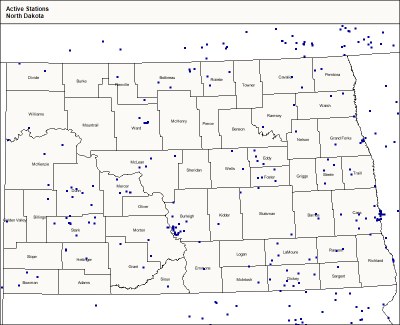Measuring Rain at Home
We can go online or watch television and see how much rain fell at the local weather station, but rains are spotty. The rainfall amount in one neighborhood can be very different than another.
The amount of rain that falls in our yards is important. The lack of water is the most limiting factor to having a great yard and garden in North Dakota. We live in one of the driest states in the USA.
It’s time for a rain gauge. It’s time to make smart decisions on watering the yard. It’s time to grow a green lawn and a bountiful garden without wasting water (and money).
That’s when I discovered the Community Collaborative Rain, Hail and Snow (CoCoRaHS) Network. It’s a group of over 15,000 volunteers—300 in North Dakota—that measure rain, hail and snow in their backyards.
CoCoRaHS trains volunteers to get quality data from inexpensive equipment. Here is how they recommend we measure rain in our yards:
Selecting a Gauge
Use a rain gauge with an opening of 4 inches or more. Smaller openings provide misleading amounts. CoCoRaHS has a specific model they use. It is available for less than $40 at http://www.weatheryourway.com/cocorahs/rgcoco.htm, Amazon.com and other online sites. It provides accurate measurements to the nearest one hundredth (0.01) of an inch.
Placement
Many people place their rain gauge near their homes out of convenience, but this is usually a bad location. Depending on the direction of wind, the house can block rain from falling into the gauge. Raindrops may also bounce off the roof of the house and into the gauge.
Avoid large obstacles (buildings and trees) that block precipitation. In a perfect situation, place your gauge two times the distance as the height of a nearby tall object. For example, if you have a two-story home (about 30 feet high), place the gauge at least 60 feet downwind from your home.
Keep your gauge away from roofs or other surfaces where heavy rains could bounce off and into the gauge.
The area should be away from sprinklers and protected from strong wind, if possible.
It’s not always possible to find a perfect location. Just do your best.
Mounting
Mount the gauge on a single post (see top photo). Keep the opening of the gauge several inches above the post to prevent raindrops splashing off the post and into the gauge. The top of the post should be rounded, pointed or slanted downwards—not flat.
The gauge should be 2–5 feet off the ground. The opening of the gauge should be level.
Joining CoCoRaHS
It’s easy to join and everyone is welcome. There is a need for more volunteers inNorth Dakota. You can sign up online, buy the gauge and receive online training. Every morning, you can measure your gauge and share your results online.
Your information will be used by meteorologists, farmers, city officials and others for monitoring water supplies, forecasting floods, assessing storm and drought damage to crops, managing irrigation, controlling mosquitoes, and understanding our changing weather patterns.
I’m joining this network. It will help me grow a better garden and the information will help others, too. If you are interested, go to their website: https://www.cocorahs.org/.
Written by Tom Kalb, Extension Horticulturist, North Dakota State University.
Source: Community Collaborative Rain, Hail and Snow (CoCoRaHs) Network. 2018. https://www.cocorahs.org/
Photos courtesy of National Aeronautics and Space Administration; Community Collaborative Rain, Hail and Snow (CoCoRaHs) Network.



